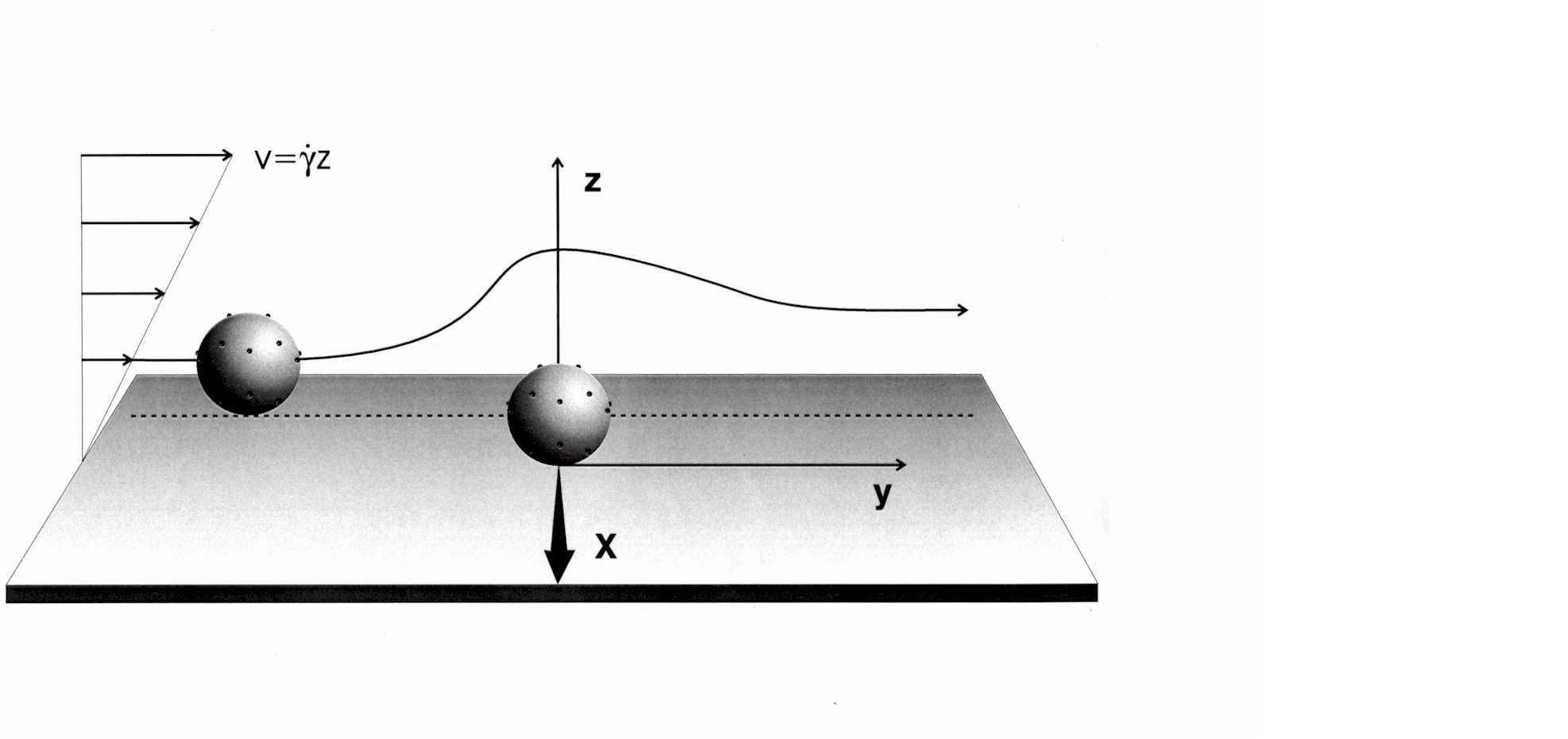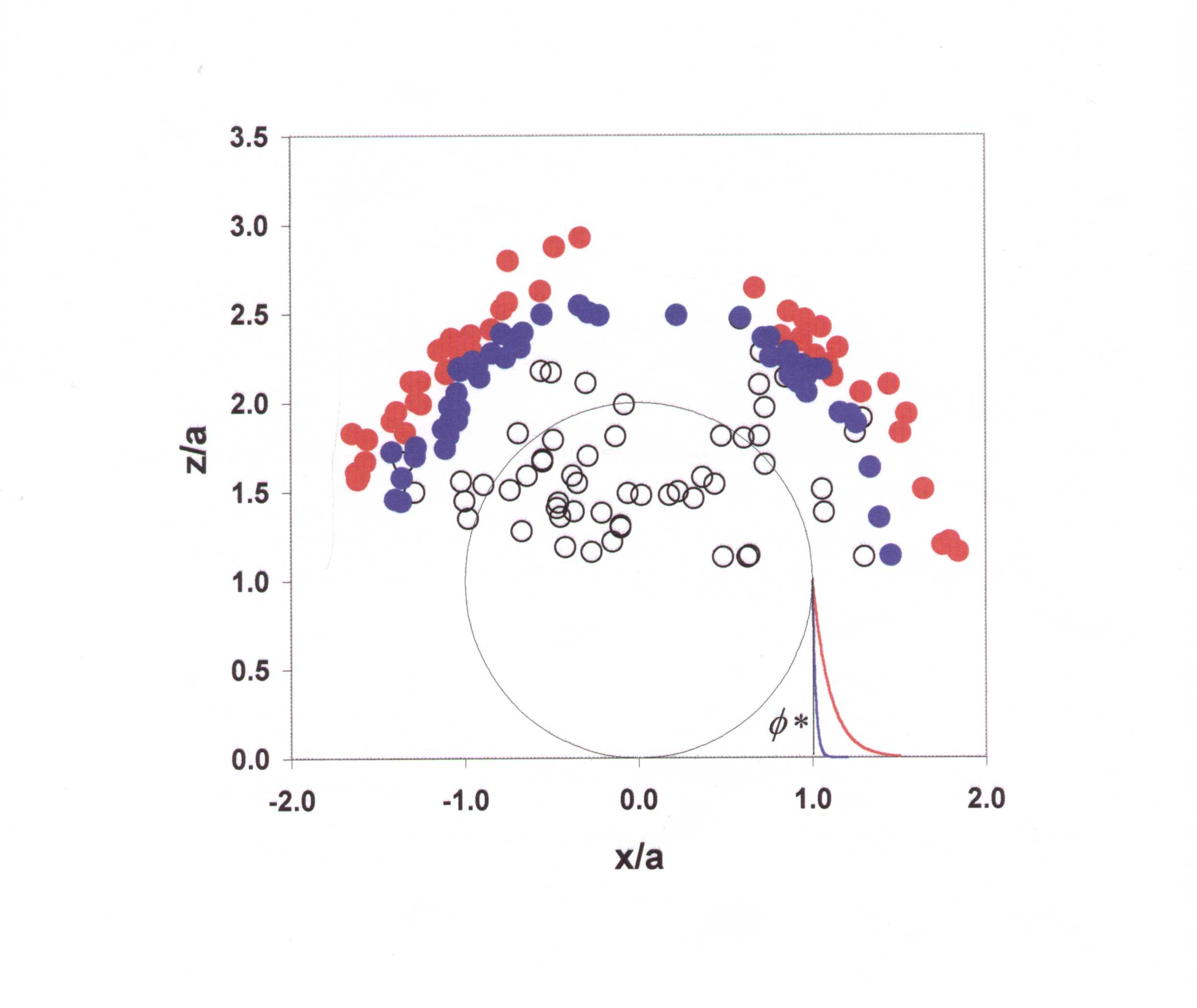
Colloidal Particle Scattering
This work was carried out at Leeds University in the Procter Dept of Food Science with Brent Murray and Prof. Eric Dickinson. The (difficult!) experimental work was performed by Jianshe Chen and Hurley Casanova using an apparatus built by Philip Nelson. The experimental studies are designed to probe the interparticle interaction forces which are central to a theoretical understanding of colloidal behaviour. By imposing a shear field v(z) on a very dilute suspension the trajectory of an individual mobile colloidal particle can be tracked as it passes over and around a similar particle fixed to a wall (Figure 1). The details of the trajectory, and in particular the final scattered positions of the particles, contain information about the interaction force but to get it we have to be able to simulate the experiment accurately. Part of the interaction force is due to hydrodynamic forces and part due to the colloidal forces. The simulations are designed to extricate these contributions.
Figure 1.

Figure 2 represents the results of a simulated experiment. The view is in the direction the shear field (down the y-axis) and the large circle represents the projected image of the fixed particle. The scattered particle is the same size as the fixed particle and the starting positions at (y/a = -10) are shown as small open circles. The positions after scattering (y/a = +10) are shown as filled coloured circles, the colour corresponding to the attendant plots of interaction potential that caused the scattering. These interactions are plotted as a normalised potential on the same scale as the fixed particle image.

The experiment can also be performed at lower shear rates to study particle capture or aggregation. Simulation studies have also been performed for this scenario. In this case protein-coated emulsion droplets were found to be unusual in that capture occurred uptream in an unstable position. This implies that a tangential frictional force is present opposing the shear forces.
Abstracts